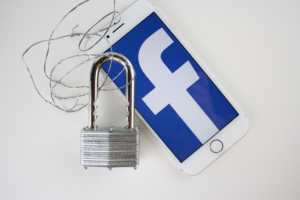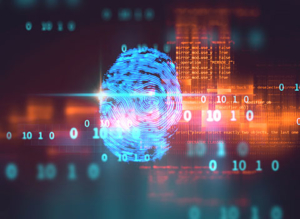Don’t Let a Pedophile Larry Nassar Happen to Your Kid
A very recent blog I published titled “15 Year Old’s Naked Photos Spread Like Wild Fire” is now of on the most clicked blogs on my site. It has significantly increased my websites traffic. But, scarily, for all the wrong reasons. The “15 year old naked pictures” part of the title is attracting skeevy pedophiles to my blog. Hi there pedophiles! Go jump off a bridge, your sucking up too much air!
 You know Larry Nassar; the sick creep who worked as the doctor for USA Gymnastics. With up to or more than 156 victims, he was convicted of 10 counts of first-degree criminal sexual conduct, and he was ultimately sentenced to 40 to 150 years in prison. 150 years isn’t enough. I hope prison is as horrible as him.
You know Larry Nassar; the sick creep who worked as the doctor for USA Gymnastics. With up to or more than 156 victims, he was convicted of 10 counts of first-degree criminal sexual conduct, and he was ultimately sentenced to 40 to 150 years in prison. 150 years isn’t enough. I hope prison is as horrible as him.
One study says as many as 1 in 35 men could be pedophiles. Some studies suggest that the prevalence of pedophilia may be between 3% and 5% in the general population. That’s the WORLDS population. What this means is pedophilia, while horrible and not right, is “normal” in the sense that it’s an inherent human behavior that people are born with. It always has been, is, and always will be a human trait.
Nassar began working with gymnasts more than 40 years ago when he was an athletic trainer as a student. He graduation from the University of Michigan with a kinesiology degree, and in 1986, he joined USA Gymnastics. He went on and received a degree in osteopathic medicine from Michigan State, and by 1997, he was the team physician for USA Gymnastics and became an assistant professor. He kept both jobs until his evil crimes were revealed.
How can you keep your kids safe from the Larry Nassar’s of the world? Here’s some tips:
Believe them When They Try to Tell You About Abuse
Many parents were told that Nassar was being abusive to their children, but they didn’t believe them at first. Some people still don’t believe that Nassar is guilty, too. People like Nassar are often charming and manipulative and are great at making people believe they are innocent.
Anyone Can Abuse
To most people, Nassar was always caring and kind, and this is what he showed the community and the parents of his victims. Don’t believe it.
Abusers Do Their Best to Win the Trust of Their Victims
Nassar did all that he could to make his victims and their parents trust him. He saw them socially, and even went to their homes.
Reach Out to Police Immediately
If something does happen to your child, reach out to your local police department as soon as you find out. Don’t let this continue happening. The police, unfortunately, don’t always take children seriously, so make sure that you don’t let them push your accusations aside.
Reach Out to Journalists
Consider reaching out to journalists about the case. The first reports of any abuse done by Nassar was actually posted in the Indianapolis Star in 2016. Not only does this help other abused kids from speaking up, it also helps to have the skills of an investigative journalist on your side. If the media hadn’t heard whispers of Nassar’s crimes, he might still be out there abusing kids.
Teach Your Kids to Speak Up
Most kids are taught that they need to treat adults with respect and not to question them. However, when an adult does something bad, it’s important that you also teach your kids to speak up and tell you when something seems weird.
Good and Bad Touches
Finally, but most importantly, teach your kids good and bad touches. I know most parents don’t even begin to know how to start this conversation. But the fact is, there are people in all our lives who seek opportunities with kids. Have uncomfortable conversations that tread lightly on the topic and gradually increase the frequency of this dialog so you know your kids understand. A quick search on Youtube for “Good and Bad Touches will provide you with excellent examples you can use to inform both you and your kids. The nonprofit Barbara Sinatra Children’s Center Foundation in conjunction with Wonder Media has developed a national campaign on a child abuse awareness and prevention. Check them out.
Robert Siciliano personal security and identity theft expert and speaker is the author of Identity Theft Privacy: Security Protection and Fraud Prevention: Your Guide to Protecting Yourself from Identity Theft and Computer Fraud. See him knock’em dead in this Security Awareness Training video.

 Here are some tips that you can use to protect yourself:
Here are some tips that you can use to protect yourself: The man arrested is Gary Hartman, and he is accused of killing and raping 12-year old Michella Welch. Donald Ramsdell, the Tacoma Police Chief, has said that computer modeling, police techniques, and advances in DNA identification has led his team to arresting Hartman on June 20th.
The man arrested is Gary Hartman, and he is accused of killing and raping 12-year old Michella Welch. Donald Ramsdell, the Tacoma Police Chief, has said that computer modeling, police techniques, and advances in DNA identification has led his team to arresting Hartman on June 20th. Obtaining Your Free Credit Report
Obtaining Your Free Credit Report Fake Bitcoin Exchanges
Fake Bitcoin Exchanges The scam started out fairly small and localized, but now, people from across the country are reporting that they are getting calls from people stating that they are from the Social Security Administration. The caller attempts to get personal information from the person they call including address and banking information.
The scam started out fairly small and localized, but now, people from across the country are reporting that they are getting calls from people stating that they are from the Social Security Administration. The caller attempts to get personal information from the person they call including address and banking information. The study also showed a shift in how ID theft fraud was being done. Credit card accounts were the most common targets for new account fraud, we also see that there is a big uptick in other accounts being targeted, including PayPal accounts and e-commerce merchant accounts. We can also see that more than 30% of consumers in the US were notified that their information was part of a data breach, which is 12% higher than the year before. Social Security numbers also seem to be a favorite of ID thieves, as are credit card numbers. We also see that due to these breaches, consumers are becoming less trusting when it comes to companies and financial institutions that are storing personal data.
The study also showed a shift in how ID theft fraud was being done. Credit card accounts were the most common targets for new account fraud, we also see that there is a big uptick in other accounts being targeted, including PayPal accounts and e-commerce merchant accounts. We can also see that more than 30% of consumers in the US were notified that their information was part of a data breach, which is 12% higher than the year before. Social Security numbers also seem to be a favorite of ID thieves, as are credit card numbers. We also see that due to these breaches, consumers are becoming less trusting when it comes to companies and financial institutions that are storing personal data. The Department of Justice
The Department of Justice  This type of identity theft shows us that our credit system is more vulnerable than we might think. Basically, it is easy to create a credit file on these identities, and once they have that, they can get a credit card or loan.
This type of identity theft shows us that our credit system is more vulnerable than we might think. Basically, it is easy to create a credit file on these identities, and once they have that, they can get a credit card or loan.























